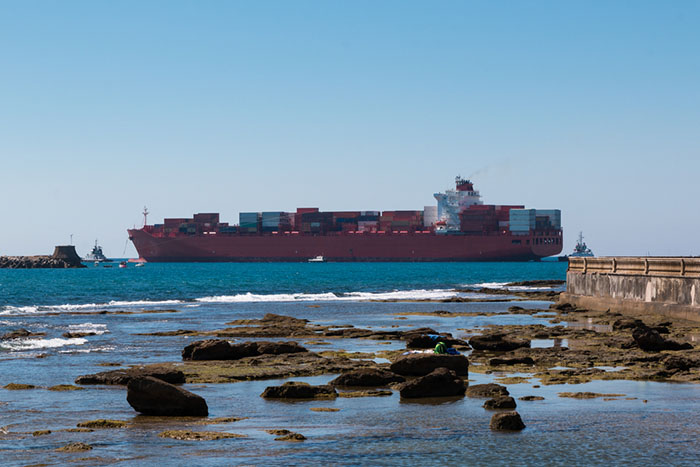Next wave of liner consolidation seen in three to four years
Bill Mongelluzzo, Senior Editor | Sep 14, 2016 11:54AM EDT
 As the collapse of Hanjin Shipping will fail to pull large amounts of capacity from the global market, further consolidation is likely.
As the collapse of Hanjin Shipping will fail to pull large amounts of capacity from the global market, further consolidation is likely.
CHARLESTON, South Carolina — The container shipping industry hit bottom in 2016 and is poised to experience three to four years of relative stability before going through another round of consolidation, industry analyst Lars Jensen said Tuesday.
Jensen, partner and CEO of SeaIntel Consulting in Copenhagen, told the South Carolina International Trade Conference Tuesday that carrier mergers this year, and next year’s reduction of vessel-sharing alliances from four to three, should put a temporary stop to almost two years of steady freight rate erosion.
Mergers and acquisitions involving Cosco Container Lines and China Shipping Container Lines, Hapag-Lloyd and CSAV, Hapag-Lloyd and United Arab Shipping Company and CMA-CGM and APL, and Hanjin Shipping’s bankruptcy proceedings, have reduced the number of major liner companies to 14. A second round of consolidation beginning in about five years will further reduce the number to six from eight global carriers by 2025, Jensen said.
The four vessel-sharing alliances this year announced that most of the carriers will leave those existing groupings and by next spring reconfigure themselves in three larger alliances. “All three will field competitive services,” Jensen said. He was referring to the 2M Alliance of Maersk Line and Mediterranean Shipping Co., which may be joined by Hyundai Merchant Marine; the Ocean Alliance of CMA-CGM-APL, Cosco China Shipping, Orient Overseas Container Line and Evergreen Line, and THE Alliance of Hapag-Lloyd-UASC, NYK Line, MOL, “K” Line and Yang Ming Line. Hanjin Shipping had been scheduled to join THE Alliance before it collapsed into bankruptcy.
This consolidation of container lines and alliances should provide a measure of stability among the remaining players, while at the same time improving service for beneficial cargo owners by establishing more direct port-to-port services, Jensen said. On the other hand, the fewer, larger alliances could result in a loss of business for transshipment ports as BCOs have additional options for direct port calls, he said.
The rate erosion of recent years should be coming to a pause. Jensen showed a chart of the volatile but downward trending of rates to record lows, saying it “looks like someone having a heart attack.” Carriers have already registered a cumulative loss of $4 billion in 2016 and will continue to lose money for the rest of the year despite the demise of Hanjin, he said.
However, cargo demand should continue to grow at about 2 percent to 4 percent in coming years. This new normal is not bad, and in fact tracks the growth of most industries, Jensen added. Large increases in capacity, rather than tepid growth in demand, have been the downfall of carriers in recent years. This year, though, has been marked by relatively few orders for big ships.
Nevertheless, orders placed in previous years will result in the delivery of 130 large post-Panamax vessels through 2018, which will produce another round of consolidation beginning at the end of the decade. The size of vessels that individual carriers will receive will have a direct impact on their operational efficiencies. Jensen said vessels with capacities of about 14,000 twenty-foot-equivalent units are a “good size” for the major east-west trades, especially if they are utilized at high capacity levels. Vessels of 18,000 TEUs to 20,000 TEUs are “in the grey zone,” and talk of 25,000-TEU vessels would be “bad” for the carriers, at least under today’s growth projections, he said.
The carriers that survive the next round of consolidation will be those lines that will have access to capital from investors, Jensen said. For the industry’s sake, a repeat of carrier collapses such as Hanjin is going through would not be good. Hanjin had been declining for some time. “It wasn’t orderly. It was destructive,” Jensen said. Mergers and acquisitions among relatively healthy lines are more orderly, he added.
If carriers refrain from ordering unnecessary new capacity, and they patiently grow into the new capacity they have taken possession of in recent years, the volatile rate swings should subside and the industry can concentrate on providing efficient, reliable ocean transport. “We are a mature, slow-growth industry, but we are a large, strong, necessary industry,” Jensen said.

No comments:
Post a Comment